Rohr Chabad Jewish Center
Introduction
Text-to-speech Audio
Images
Portrait of Governor William E. Glasscock. Photo credit: West Virginia & Regional History Center, WVU Libraries
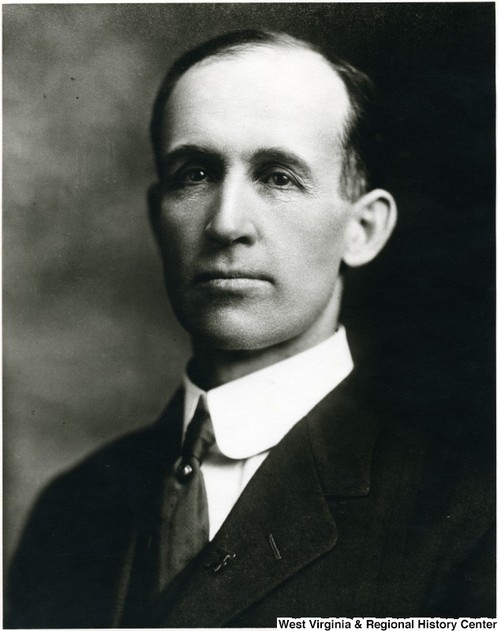
Photograph of the Trinity Episcopal Church ca. 1910. The Walters Residence is visible to the right of the church. Photo credit: West Virginia & Regional History Center, WVU Libraries

Photograph of the newly renamed campus ministry center when it was located on the Evansdale Campus. Photo credit: The Daily Athenaeum, March 24, 1970, 1-B.
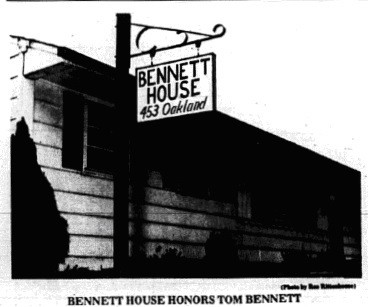
Thomas Bennett (ca. 1967) - The campus ministry center was renamed the Bennett House after he died in the Vietnam War. Photo credit: West Virginia & Regional History Center, WVU Libraries
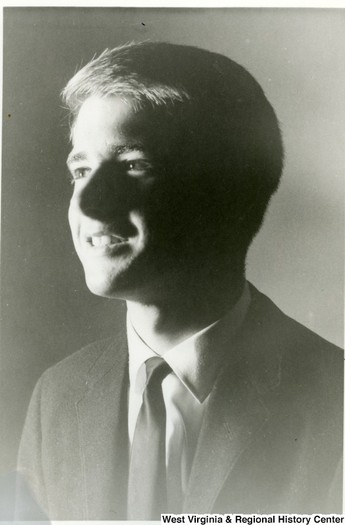
The Rohr Chabad Jewish Center, former residence of Mary S. Walters. Courtesy of the Charleston Gazette-Mail.
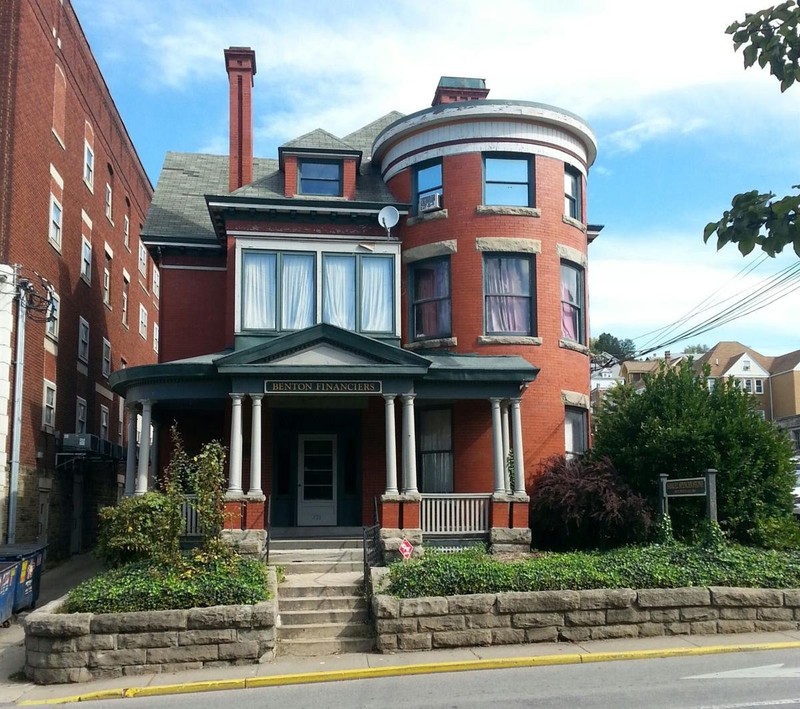
Undated photo of the Masonic Temple at left, and what is now the Rohr Chabad Jewish Center at right.
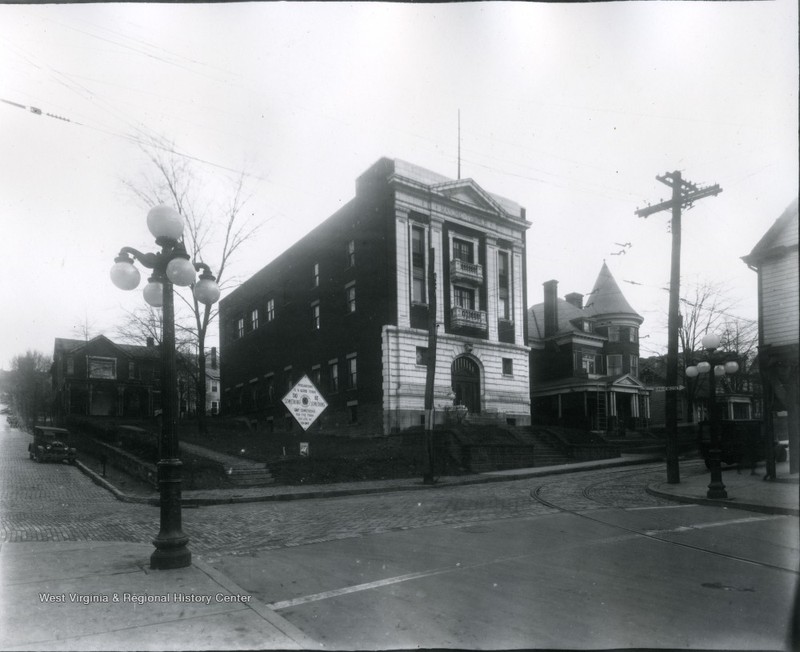
Backstory and Context
Text-to-speech Audio
Located just outside of the original Morgantown city limits, the building now known as the Rohr Chabad Jewish Center enjoys a number of connections to prominent figures and organizations from the history of West Virginia, West Virginia University, and the city of Morgantown. The land upon which it is built was originally under the ownership of William E. Glasscock, the Republican governor of West Virginia from 1909 to 1913. Glasscock and his wife, Mary, sold the land to Mary S. Walters in 1899, who ordered the construction of a new home on the site from 1900 to 1901. Elmer F. Jacobs designed the Queen Anne Revival style home. After Walters' death in 1913, the house became the property of one of her heirs, Ona Fling, who rented rooms out later in her life. It is during this time period that the house became the headquarters of a succession of West Virginia University fraternities. The university chapters of Sigma Nu, Sigma Phi Epsilon, and Tau Kappa Epsilon utilized the space at various times between the 1920s and 1940s, as did a number of other boards (among them Reverend William H. Berry, rector of St. Paul's Lutheran Church at the time). After Fling's death in 1931, the house transferred to her heir Elsie Fling Price, who continued to rent rooms in the house to boarders during her time as owner. In 1951, however, she sold the building to Ivan M. and Ades Shahan Bowers, who in turn sold the property to the nearby Trinity Episcopal Church. Starting in 1971, the church leased the house to the University Christian Council and Women's Information Center, but rescinded the lease eight years later in protest of the center's activities. In 1981 the law firm of Stone, Gallagher, and Byrne (SGB, Inc.) purchased the building, but continued to rent rooms in the basement and upper stories. In 2004, they sold the building to Benton Financiers, Inc., which in turn sold the structure to the Rohr Chabad Jewish Center three years later.
The owners of the land on which the Rohr Chabad Jewish Center now stands prior to the building's construction between 1900 and 1901, William E. and Mary Glasscock, are particularly prominent figures in the twentieth-century history of West Virginia. During his time as governor of the state between 1909 and 1913 Glasscock weathered a number of political controversies, most notably the Paint Creek-Cabin Creek coal miners' strike of 1912. Born on a farm near Arnettsville in 1862, Glasscock attended West Virginia University before going on to work as a teacher and attorney in Morgantown. Prior to his election as governor, he served as superintendent of Morgantown schools, clerk of the county circuit court, and internal revenue collector for the state of West Virginia. Upon his victory over Democratic candidate Louis Bennett Glasscock worked to institute a number of Progressive reforms in the state, including the establishment of an agency for road construction and passage of a worker's compensation law. His successes were largely overshadowed by the his response to the Paint Creek-Cabin Creek coal miner's strike in 1912, however, during which he ordered state militia troops to aid mine owners in quelling the strike by force. His decision set in motion the Mine Wars of the twentieth century, an armed conflict that left an untold number of West Virginia's miners dead at the hands of state militia and private police forces hired by mining executives.
Glasscock never recovered from the stress of his experiences as head of state, and returned to Morgantown after one term to resume his law practice. By the time he did so, the building that now houses the Rohr Chabad Jewish Center had stood on the site of his former land for over a decade. Standing at the northernmost boundary of the town's former limits, the structure constructed at the behest of Mary S. Walters between 1900 and 1901 is one of a number of elaborate homes built in downtown Morgantown at the turn of the twentieth century for upperclass residents with connections to the adjacent business district. Like many of its compatriots the building includes a number of features typical of the Queen Anne Revival architectural style popular at the time, most notably the tower on the southeast corner, wraparound porch, and interior stained glass windows.
Also like many of its compatriots, the building went on to serve a variety of purposes after its original owner's death from boardinghouse to business center. By far its most notable use prior to becoming the Rohr Chabad Jewish Center, however, was as the headquarters of the University Christian Council (UCC). The UCC was a relatively new ecumenical campus ministry at the time, and during its period of occupation in the house occupied the first floor while students continued to live in the upper stories. The Council emerged from the ecumenical movement within the field of campus ministry, which was active at West Virginia University in the late 1960s. In 1969, the ecumenical campus ministry center was named the Bennett House in honor of Thomas Bennett. Thomas Bennett was a conscientious objector who was killed in Vietnam while serving in the Army Medical Corps. He was posthumously awarded the Congressional Medal of Honor. When he was a student at West Virginia University, Thomas Bennett served as the president of the Campus Ecumenical Council and was very involved in the campus ecumenical movement and social causes. At the peak of the campus ecumenical movement, West Virginia University’s campus ministry center included United Methodists, Roman Catholics, Presbyterians, Episcopalians, Lutherans, and Disciples of Christ ministers. In late twentieth-century Morgantown, many campus ministers, particularly those of liberal Protestant denominations, worked closely with student activists and were involved in social activism. In the 1970s, campus ministers in the Bennett House were involved in a number of student and community projects, including draft, drug, and abortion counseling.
The Women’s Information Center, which was founded in 1971, operated within the campus ministry until the early 1990s under the direction of Reba Thurmond, United Methodist campus minister. The Center offered anonymous pregnancy testing and pro-choice counseling as well as programs on women’s issues. The organization’s philosophy was to empower women with information to make their own decisions regarding their sexuality and reproductive lives. In 1973, the Rape Information Service, which became the Rape and Domestic Violence Information Center, opened in the Bennett House. It was a collaborative project of the Women’s Information Center, the local National Organization for Women chapter, and the Women’s Affairs Committee of WVU. The organization provided services to victims of sexual assault, hosted public programming on sexual assault, and lobbied for legislative changes. Eventually, it outgrew the Bennett House and moved into its own building. Grassroots feminist organizations like the Women’s Information Center and Rape and Domestic Violence Information Center were established all over the country during the late-twentieth century revival of the women’s movement. The Trinity Episcopal Church disagreed with some of the activities of the Center, however, and eventually caused the UCC to move out of the Walters residence in 1979. The UCC moved to a building that was once part of the old downtown hospital that no longer exists and then to the Rogers House, where it has been located since 1984.
After the UCC left the former Walters residence in 1979 the building found a new life as the law offices of Stone, Gallagher, and Byrne (SGB, Inc.), which remained at the location until 2004. In 2007 it became West Virginia University's Rohr Chabad Jewish Center, promoting Jewish culture and community at the university and in the Mountain State. Chabad, an Orthodox form of Judaism, is one of the largest Jewish organizations in the world, and the Rohr Chabad Jewish Center is one of over a hundred such university organizations across the country. The Center currently holds Shabbat dinners every Friday at 7:15 PM and rabbi open office hours on Wednesdays from 1 to 3 PM. Such activities make the building central to the Jewish community both in and outside the university. The site's many connections to individuals and organizations from local, state, and university history, however, also make it a unique stop for the historically inclined visiting WVU or downtown Morgantown.
Sources
Belck, Terry, “‘He Was In Love With People' Bennett House conveys Tom’s spirit,” The Daily Athenaeum, March 24, 1970, 1-B.
Corbin, David A. "The Mine Wars." The West Virginia Encyclopedia. December 20, 2016. Accessed June 30, 2019. https://www.wvencyclopedia.org/articles/1799.
Fox, Char "Women's Info Center has alternative," The Daily Athenaeum, April 6, 1972, 3.
Little, Glade. "William Ellsworth Glasscock." The West Virginia Encyclopedia. May 16, 2016. Accessed June 30, 2019. https://www.wvencyclopedia.org/articles/2119.
McKeown, Bonni, Peaceful Patriot: The Story of Tom Bennett (Charleston, WV: Mountain State Press, 1980).
Midmeyer, Scott, “Reach Out - Bennett House: a common bond,” The Daily Athenaeum, September 21, 1972, 1.
Stone, Gallagher, and Bryne. Walters House, National Register of Historic Places. May 1st 1983. Accessed October 8th 2020. http://www.wvculture.org/shpo/nr/pdf/monongalia/83003246.pdf.
Trexler, Terry, "Campus Groups Participate - Women's Liberation: A Revolution," The Daily Athenaeum, November 6, 1973, 7.
Trexler, Terry, "Local Women's Groups Provide Service, information, Assistance," The Daily Athenaeum, November 7, 1973, 7.
Weiss, Ken "Women's Information Center Formed," The Daily Athenaeum, September 21, 1971, 3.
"Masonic Temple, Morgantown, W. Va.," West Virginia History OnView, West Virginia and Regional History Center, West Virginia University Libraries. https://wvhistoryonview.org/catalog/011808.
